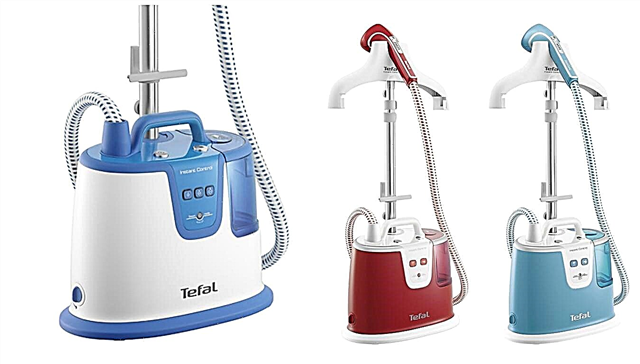Charming Japanese Marie Kondo has taught millions of people how to clean! Try it and you "method Konmari", which works wonders even in the most hopeless cases.

Marie Kondo was carried away by cleaning as early as ten years and since then she has been constantly improving, studying this art with Japanese methodology and determination.
At first glance, it might seem that there is nothing to study here for many years, and housewives with twenty years of experience themselves could have taught Marie Kondo a lot, but it’s enough to read only a few chapters from her book “Magic Cleaning. The Japanese Art of Cleaning House and Life” to make sure - Conmari's approach (as she calls herself) is really unique.
The girl tells and shows in her own show on the Netflix channel how to put things in order in the whole house, but today we will figure out how to disassemble clothes using the Konmari method!
Big revision: where to start

The very essence of the Conmari method is that every item (not necessarily clothing, generally any) in your house should cause you real and sincere joy. If a thing does not cause positive emotions and does not have a functional need (say, a set of screwdrivers may not cause you joy in your soul, but it is used almost every time you need to fix something in the house), then such a "joyless" thing is not place in your house.
You need to check things for such an emotional response in a certain order in order to save both time and nerves. The first item on the list is clothing, then books, documents, miscellaneous, and finally things that you are emotionally attached to (for example, souvenirs, photographs, etc.). Each of these large categories can be divided into smaller ones. For example, clothes can be divided into the following groups: tops (shirts, cardigans, T-shirts, t-shirts, sweaters, etc.), skirts, trousers, dresses, outerwear, underwear.
Choose the category with which you will start, and proceed to the first step towards the ideal order!
We make the perfect wardrobe: the rule of the pyramid
Step 1. Putting it all in one place
Let's say you have selected the tops category. Now your task is to assemble them from absolutely all closets and all rooms. Do not disassemble tops in only one room - otherwise tomorrow you will have to repeat all the same in another! The idea is to immediately take and disassemble the entire category.

Put all the tops in one big pile on the bed without forgetting a single T-shirt or a single T-shirt. As Marie Kondo writes, people are often dumbfounded by the volumes that open before them. To somehow approach this pile, she recommends starting with the tops NOT according to the season, because in this case it’s easier for you to sort out what you would wear with joy as soon as the weather allows, and you don’t really expect to see anything. If you start with the clothes you are wearing now, there’s a great risk of saying to yourself, “Well, I don’t really like this blouse, but I wore it just yesterday ...” and succumb to the desire to leave it.
What is a capsule wardrobe and how to make it
Lay things out in two piles, sending one that gives you positive emotions and joy, and one that you have to say goodbye to.
Tip: Anyone who has taken to disassemble the clothes is waiting for a trap - the desire to transfer a thing into the category of home clothes, instead of throwing it away. Marie Kondo is sure that at home you don’t need to wear old, but not all new clothes are suitable for wearing at home. If you don’t want to wear these things in the light, you will almost certainly not want to put them on at home, and as a result, these clothes will gather dust in your closet.Wear at home that relaxes you, evokes pleasant emotions and pleases you with comfort!
Step 2. Fold correctly

Once you have sorted things into two piles, you need to fold the clothes that you decide to leave, but fold correctly. Marie Kondo believes that hanging on hangers is necessary only for things that cannot be stored otherwise - for example, jackets, dresses, coats, skirts, things made of delicate fabrics. All the rest can and should be folded, and several times, to a neat rectangle. The main trick here is to store things not horizontally, but ... vertically!

The goal is to fold the thing into a simple smooth rectangle, so that the folded garment can be put on the edge. This process is best seen in the video in which Marie Kondo herself demonstrates the correct folding.
Step 3. We hang it right
The basic rule is to hang clothes from the same category side by side, dividing the space into a section of jackets, a section of suits, etc.
In addition, Marie Kondo offers an unusual trick: arrange the clothes so that it "rises to the right." In her opinion, even a drawn arrow leading up from left to right creates a feeling of freedom, growth. Therefore, on the left side, you should arrange things from heavier fabrics, long or dark colors. As you move toward the right side of the hanger space, the length of the clothes should become shorter, the fabrics thinner and the colors lighter. This principle is respected within each category.

As Marie herself writes, many doubt that attention to these little things can change something, but offers to just try to make sure in experience the magic of her method.
Step 4. Storage of socks and tights

In his practice, Conmari often had to see socks rolled up in a ball, or tights tied in a knot, and every time this makes her sad. “Take a closer look at them. Socks should have time to relax. Do you really think that you can relax in this form?” she writes.
How to store wool dresses
It sounds, of course, a little funny, but this approach perfectly illustrates the attitude of the Japanese towards things. The clothes that you put on your body, even such trifles as socks, must be approached with respect, giving her credit for the emotions that she gives you. Just think, if you left only those socks that you really like, which give you joy, do these things deserve to be rolled up in an ugly ball?

Fold light tights in two and roll them into a neat cylinder, and fold dense tights in three, and then roll them up like a roll. Putting them in a box, put the cylinders upright. Lay the socks on top of each other and fold them in half, forming a rectangle and store them the same way, placing them on the edge. So all these things will be stored in a smooth and un wrinkled form, without stretching, and you will easily see how much and what you have.

“By properly folding the clothes, you express your love, care and gratitude to her,” Marie writes, and it’s hard to argue with that. You might also want to touch this uncomplicated Japanese philosophy and give your things the same care!
Photo: popsugar, @ joy.in.organizing, @elartedeorganizarok, @mariekondo



